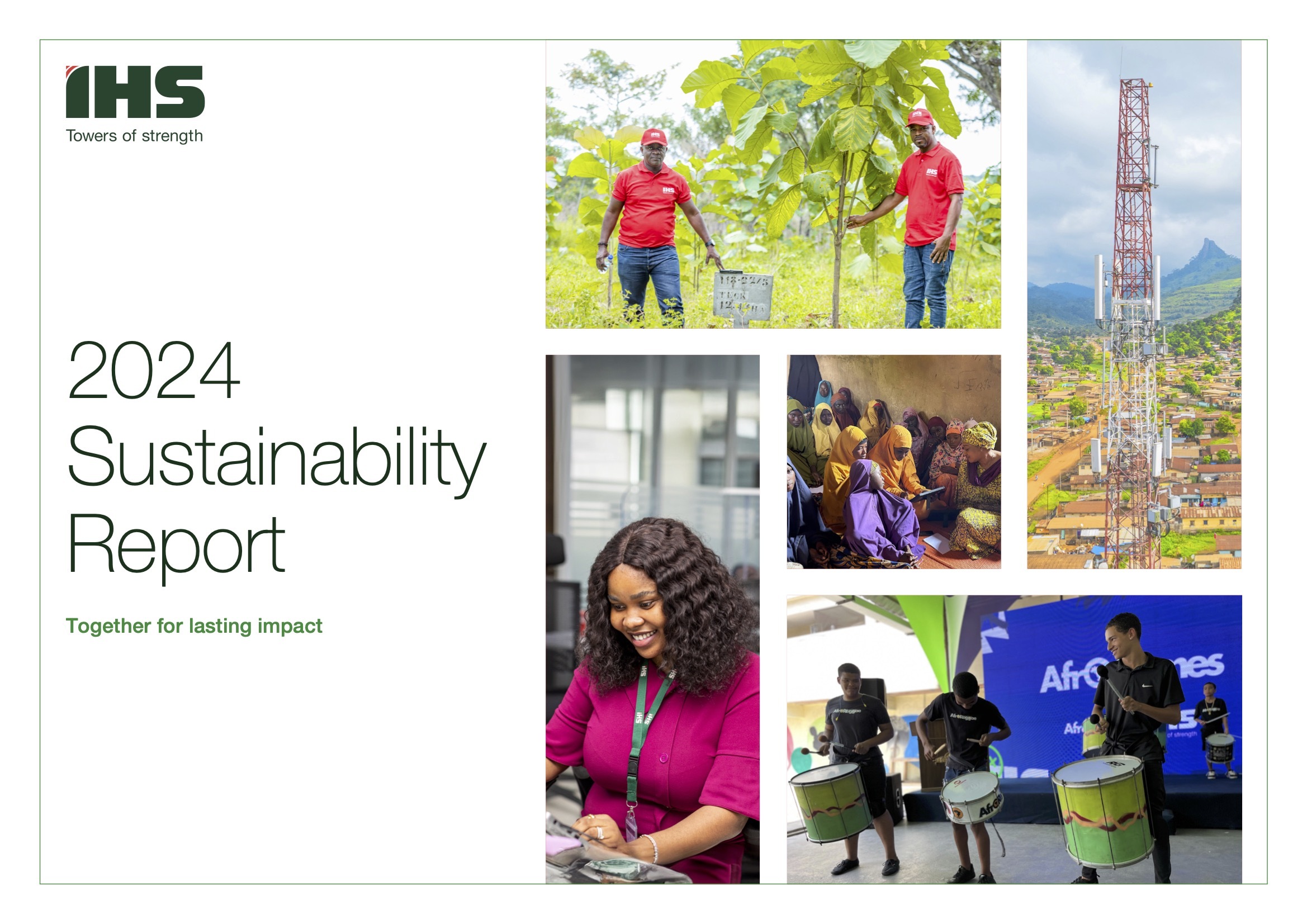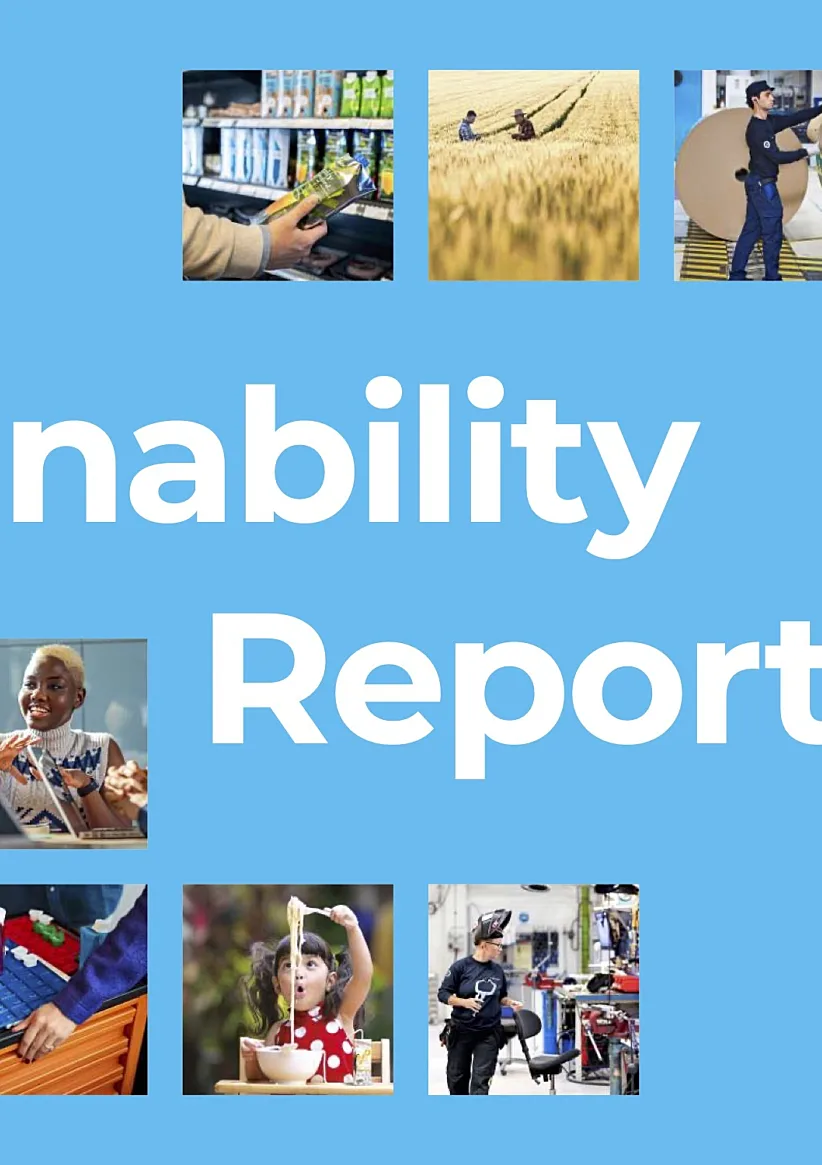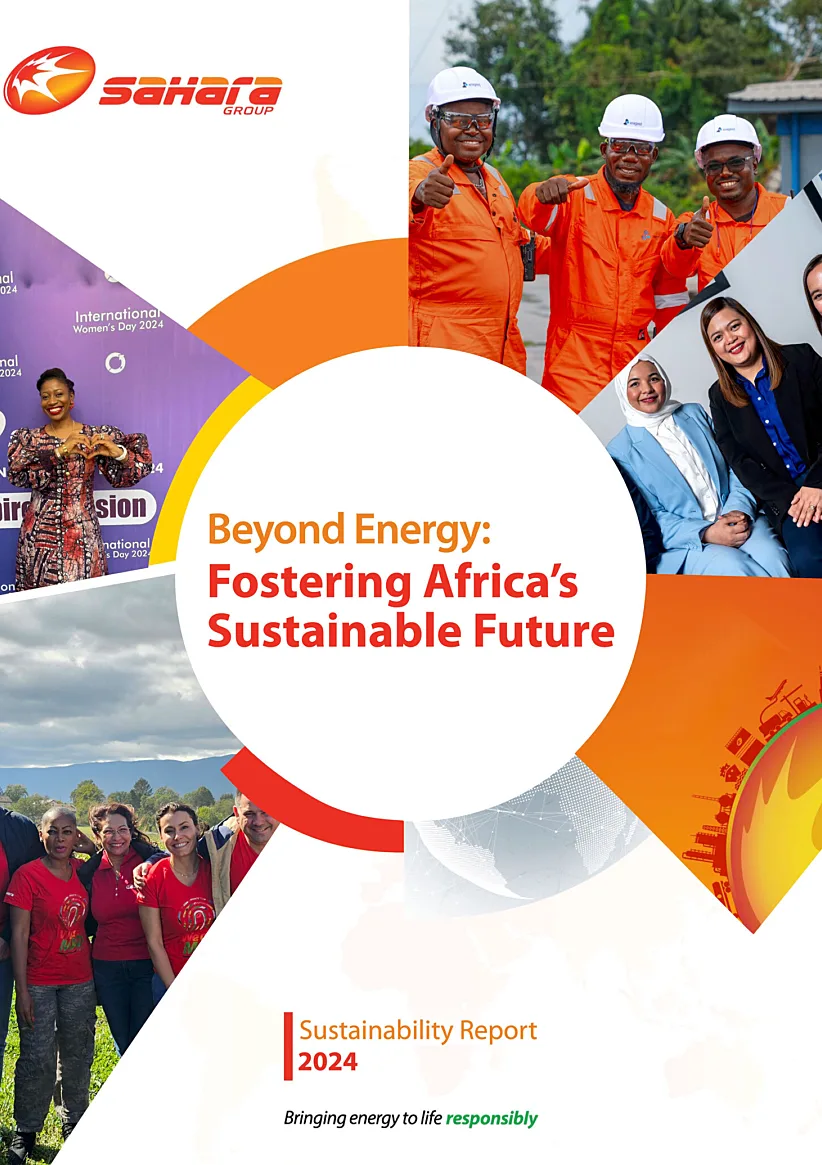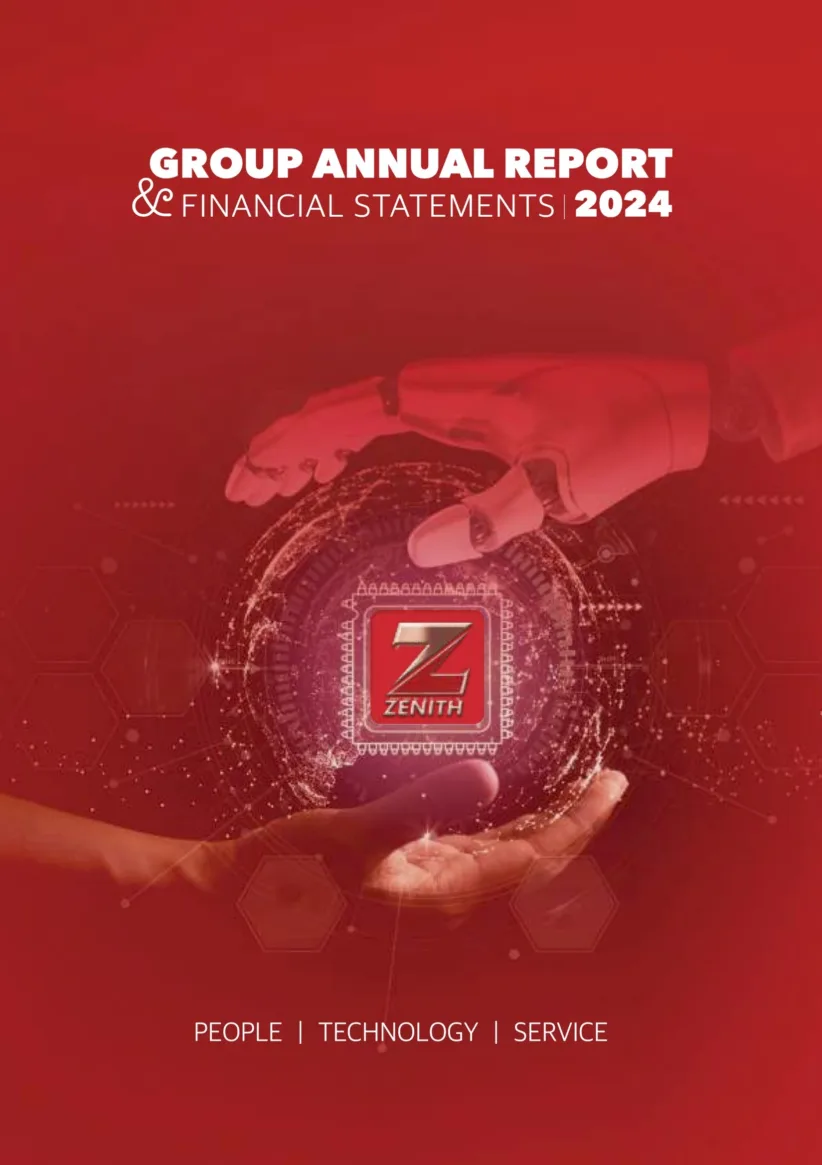Executive Summary
IHS Towers’ 2024 Sustainability Report documents its efforts and measurable progress in environmental, social, and governance areas across eight countries, supporting over 644 million people. The company's sustainability strategy is anchored to four pillars. These are ethics and governance, environment and climate change, education and economic growth, and people and communities, which mirror several UN SDGs and best-in-class international frameworks.
Key achievements include an 11% reduction in Scope 1 and 2 emissions intensity, $209 million invested in carbon reduction, 623 operational rural telephony sites powered by solar, and notable community investments.
Governance is overseen by board committees with externally assured KPIs, and materiality assessments guide priorities. IHS Towers sets a 50% emissions intensity reduction target by 2030, expands renewable energy initiatives, and strengthens safety, inclusion, and supply chain integrity.
Future improvements include more comprehensive Scope 3 emission reporting, digitalisation of operations, and enhanced waste management data collection.
SDG Alignment
Aligned SDGs: The report demonstrates alignment with at least nine UN SDGs, notably SDG 4 (Quality Education), SDG 8 (Decent Work & Economic Growth), SDG 9 (Industry, Innovation & Infrastructure), SDG 5 (Gender Equality), and SDG 13 (Climate Action), among others.
Integration
- Sustainability initiatives—carbon intensity reduction, local community investment, digital inclusion—map directly to SDG targets.
- 55% of sustainability spending is focused on education and economic growth, with investments in school connectivity, digital skills, teacher training, and rural telephony.
Geographic Coverage
- Impacts delivered across Nigeria, Cameroon, Côte d’Ivoire, Rwanda, Zambia, Brazil, Colombia, and South Africa, with plans to maintain and expand to all operating countries.
- Community investments since 2017 have exceeded $37 million.
ESG Management
Governance Structure:
- Board oversight includes Health, Safety, Security and Environment (HSSE) Committee and Audit Committee with direct responsibility for ESG strategy and risk management.
- The Executive Committee oversees sustainability implementation and receives regular updates from the Group Communications and Sustainability team.
- ESG reporting follows the GRI Standards and is mapped to the UN SDGs.
- Selected 2024 KPIs are subject to external assurance by PwC.
Frameworks Used:
- GRI, UN Global Compact, ISO 37001 (Anti-Bribery), ISO 26000 (Social Responsibility), and ISO 14001 (Environmental Management) guide and certify governance and compliance.
Initial Areas of Impact
Reported Impact Areas:
- Carbon Reduction Roadmap and Project Green: $209m invested to cut GHG emissions with an 11% reduction in kWh emissions intensity year-on-year.
- Rural telephone: 623 solar-powered sites to boost connectivity in Nigeria and Cameroon.
- Education: Partnerships with Limitless Space Institute and UNICEF Giga, providing direct support to teachers, students, and schools, impacting tens of thousands annually.
- Social Inclusion: Scholarships, inclusivity programs, gender diversity (27% female workforce, 33% female board representation), and support for frontline workers.
- Safety: LTIFR decreased to 0.05; zero employee fatalities in 2024.
Metrics for Definition
Core Metrics
- Scope 1 and Scope 2 emissions (2024: 868,011 and 109,082 tCO₂e, respectively).
- Emissions intensity (2024: 0.7703 kgCO₂e/kWh).
- Total energy consumption (2024: 3,888,339 MWh).Diesel reduction (2024: 49.8 million liters less used).
- Sustainability spending ($8.2m in 2024).
- Diversity: 2,864 employees, 51 nationalities, 27% female workforce.
Targets & Baselines:
- 50% reduction in emissions intensity by 2030.
- Waste management tracked via battery reuse/recycling numbers; future waste reporting anticipated.
Areas of Focus
Future Priorities:
- Achieve 2030 emissions intensity reduction target.
- Accelerate renewable energy deployment and integrate alternative power sources (hydropower, fuel cells, solar). Enhance Scope 3 emissions data
- collection and reporting.
- Expand community investment and regional partnerships.
- Advance digitalization and AI for operational efficiency and monitoring.
- Improve health and safety processes, contractor auditing, and supplier engagement.
Materiality Concepts
Priority Issues:
- Materiality assessment identifies 13 key ESG topics (including ethics, compliance, energy, emissions, employment, health & safety, inclusion, and education) based on GRI definition.
- Double materiality approach considers both stakeholder expectations and company impact.
Governance Alignment:
- Material topic prioritization is reviewed and updated; alignment ensures targeted investment and strategy refresh as required.
Sustainability Risk Management Concepts
Risk Oversight:
- Governance structure spans board committees, management teams, and dedicated sustainability leads.
- Key risks include climate change (extreme weather, flooding), regulatory shifts, operational safety, cybersecurity, and supply chain non-compliance.
Management Approach:
- Business continuity plans, internal audits, supplier due diligence, and risk assessment workshops underpin mitigation.
- External assurance validates select KPIs and risk controls.
Sustainability Strategy Concepts and Management
Strategy Structure:
- Defined under four pillars: ethics and governance, environment and climate change, education and economic growth, and people and communities.
- Strategies managed via board and executive oversight, with regular stakeholder engagement and reporting.
- Continuous improvement and adaptation are built into annual planning and reporting procedures.
Operations and Governance:
- Annual performance reviews, employee training (12 hours average per employee), supplier audits, and multi-national partnerships anchor practices.
- Planned future redefinition includes deepening technological integration, broadening impact measurement, and expanding ESG reporting scope.
Areas for Future Improvement
- Broader and more detailed Scope 3 emissions reporting, including supply chain and indirect environmental impacts.
- Enhancement of waste management data, tracking all waste types generated, recycled, or reused.
- Greater transparency and public disclosure of diversity, gender pay gap, and supply chain risk details.
- Ongoing refinement of materiality assessments, expanding stakeholder engagement and periodic re-evaluation.
- Strengthened monitoring of health and safety standards, especially for contractors and third-party partners in high-risk markets.





